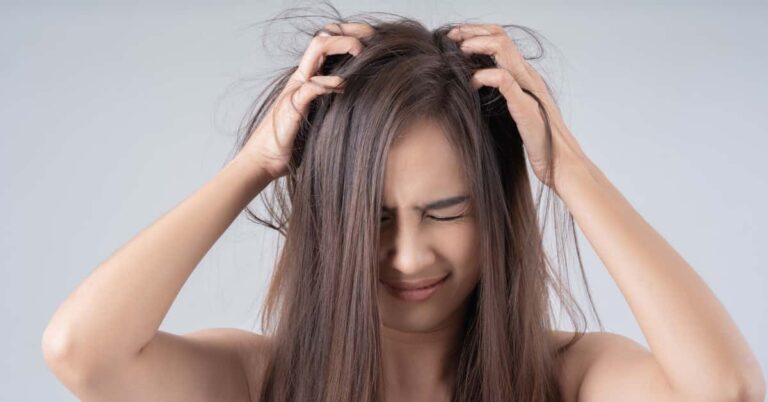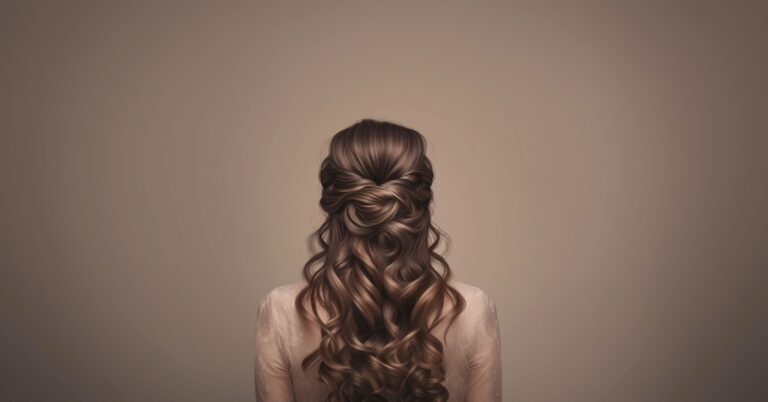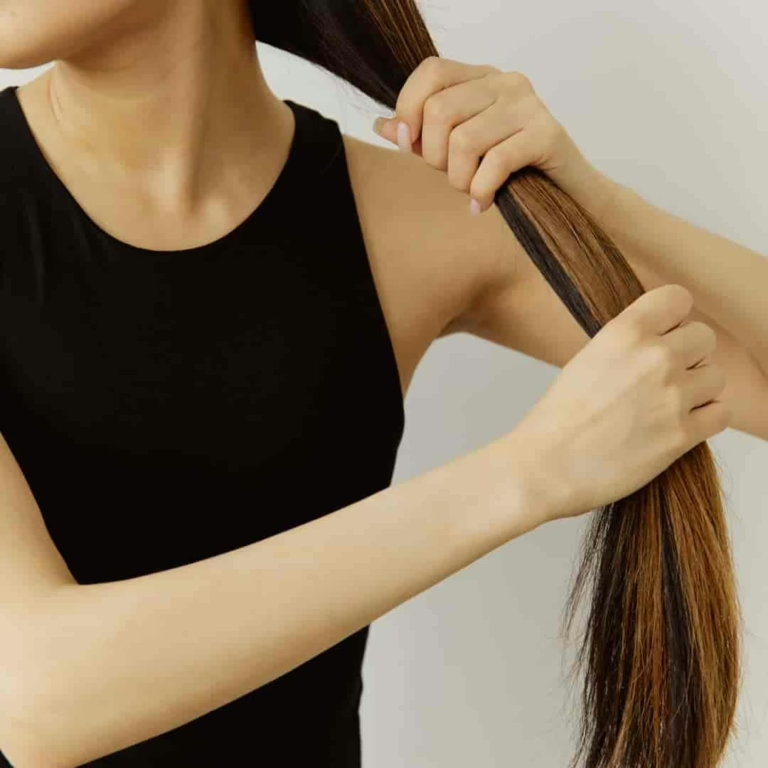Leave-In Conditioner vs. Hair Serum
Welcome to our in-depth guide comparing two popular hair care solutions: leave-in conditioners and hair serums. If you’ve ever stood in the aisle of your local beauty store or scrolled through online reviews feeling overwhelmed, you’re not alone. In today’s post, you’ll learn the ins and outs of both products—what they do, who they’re best for, and how they can solve common hair issues like frizz, dryness, and lack of shine. We’ll break down the science behind each product in simple language and offer you actionable advice so that you can decide which one might be the perfect addition to your routine. Whether you’re in a bustling metro city or a quieter tier city in India, managing your hair care should be hassle-free and effective. Let’s dive in and discover the benefits that leave-in conditioners and hair serums can bring to your everyday hair routine. You’ll walk away with a clear understanding of each product’s role and be better equipped to make a confident choice that suits your lifestyle and hair type.
Understanding the Products
When it comes to choosing between a leave-in conditioner and a hair serum, it’s important to know exactly what each product does. In this section, we will explain the unique functions of both, using simple analogies and clear language so that you feel confident in your decision.

What is a Leave-In Conditioner?
A leave-in conditioner is a lightweight product designed to be applied to your hair after washing—and you don’t rinse it out. Think of it as a protective shield that locks in moisture and smooths out your strands throughout the day. It works by nourishing each hair fiber, reducing frizz, and making your hair easier to manage. Whether your hair is dry, chemically treated, or simply in need of extra hydration, a leave-in conditioner can help restore softness and shine. The ingredients typically include natural oils, proteins, and vitamins that work together to keep your hair resilient against daily stressors like pollution and heat styling. The idea is to leave a thin layer on your hair that offers continuous benefits, making your hair feel softer and look healthier over time.
What is a Hair Serum?
A hair serum, on the other hand, is a silicone-based product that’s designed to smooth the hair’s surface and give it a glossy finish. Unlike leave-in conditioners, serums are primarily focused on addressing issues like frizz and flyaways while imparting shine. It creates a protective layer on the hair cuticle that not only tames unruly strands but also helps prevent damage from environmental aggressors such as humidity and dust. Hair serums are particularly popular among those who struggle with frizzy hair or are looking to add extra luster to their locks. They are usually applied sparingly and concentrated on the mid-lengths and ends of the hair, where damage is most noticeable. The formulation often includes ingredients that help seal moisture in, even though the product’s primary role is to enhance shine and manageability, giving your hair a polished, healthy appearance.

Benefits & Limitations
Every hair care product comes with its own set of advantages and potential drawbacks. Here, we’ll weigh the benefits and limitations of both leave-in conditioners and hair serums, so you can see which one aligns best with your specific needs.
Benefits & Limitations of Leave-In Conditioners
Benefits
Leave-in conditioners are renowned for their ability to provide continuous moisture. They help detangle hair, making it easier to comb through without causing breakage. Many users find that leave-in conditioners significantly reduce frizz and add an extra layer of protection against heat styling and environmental damage. For those with dry or chemically treated hair, this product can transform brittle strands into soft, manageable locks. Additionally, because leave-ins are lightweight, they can be used daily without weighing your hair down.
Limitations
However, leave-in conditioners may not be ideal for everyone. If you have naturally oily hair, adding an extra product might make your scalp feel greasy. Some formulations can also lead to product buildup if not washed out periodically, potentially causing dullness over time. It’s important to choose a formula that suits your hair type. For instance, if your hair is fine, you might prefer a leave-in that is ultra-light, while thicker or curlier hair might benefit from a more nourishing blend.
Practical Advice
To get the best results, apply a small amount evenly across damp hair, focusing on the mid-lengths and ends. Experiment with different products until you find one that perfectly balances moisture without overloading your strands. Remember, a little goes a long way, so start with a pea-sized amount and adjust based on your hair’s response.

Benefits & Limitations of Hair Serums
Benefits
Hair serums shine—literally and figuratively—in managing frizz and adding an instant shine to your hair. They work marvelously in humid conditions by creating a barrier that repels moisture, thereby keeping your hair smooth and shiny. Serums are particularly effective for taming flyaways and are often used as a finishing touch after styling. If you’re aiming for that sleek, salon-like finish, a hair serum is your best friend. Many serums also contain antioxidants and vitamins that help protect your hair from environmental stressors.
Limitations
On the flip side, hair serums can sometimes be too heavy for certain hair types, especially fine or very oily hair. Overuse can result in a greasy look or weigh your hair down, diminishing volume. It’s important to use serums sparingly—usually just a few drops—so that you enhance your hair’s natural texture without overpowering it. Additionally, serums tend to focus more on surface-level improvements rather than deep conditioning, so they might not provide the long-lasting hydration that leave-in conditioners do.
Practical Advice
For best results, dispense a small drop onto your fingertips, rub them together, and then gently smooth the serum over your hair. Focus on the areas where you notice the most frizz or dullness. Over time, you may need to adjust the quantity or frequency of use depending on seasonal changes or specific hair care needs.
Comparative Analysis
Now that you understand what each product offers, let’s compare them side by side. This section will help you decide which one is better suited for your hair type and lifestyle.
Moisture vs. Shine
If your primary concern is deep hydration, especially if you have dry or damaged hair, a leave-in conditioner might be the best choice. It continuously works to nourish and hydrate your hair, leaving it soft and easier to manage. On the other hand, if your hair is already well-moisturized but lacks shine or suffers from frizz, a hair serum could be more beneficial. The serum’s silicone-based formula instantly smooths the hair cuticle and adds a glossy finish, making it look healthier and more vibrant.
Daily Use and Versatility
For everyday use, leave-in conditioners offer versatility. They not only condition your hair but also act as a heat protectant and detangler. They’re gentle enough for daily application, making them a staple for those with busy lifestyles. Hair serums, however, are best reserved as a finishing product. While they provide quick fixes for unruly hair, using them too frequently can lead to buildup, particularly on fine hair. Therefore, if you’re seeking a product for daily nourishment, the leave-in conditioner might edge out the serum.
Cost and Value
Cost is another factor to consider. Leave-in conditioners are often priced reasonably and come in larger quantities, which makes them cost-effective for regular use. Hair serums, while sometimes more expensive per drop, deliver instant results that can be ideal for special occasions or quick touch-ups. Both products can be found in various price ranges, so it’s possible to find quality options that suit your budget.

Environmental and Health Considerations
In today’s eco-conscious world, the ingredients and manufacturing practices of your hair care products matter. Many leave-in conditioners are formulated with natural and organic ingredients that appeal to those seeking a holistic approach to hair care. Serums, meanwhile, can sometimes contain more synthetic components. If you prefer natural ingredients with fewer chemicals, a carefully selected leave-in conditioner might be preferable.
Lifestyle Fit
Ultimately, the choice depends on your lifestyle. If you lead an active life with little time for elaborate hair routines, a leave-in conditioner that offers multi-tasking benefits might be ideal. But if you’re preparing for a night out or an important meeting and want your hair to look polished instantly, a hair serum can be the perfect finishing touch. Remember, you can also mix and match these products in your routine—using a leave-in conditioner for daily care and a serum for extra shine when needed.

How to Choose the Right Product for You
Choosing the right hair care product can feel overwhelming, but it’s all about understanding your unique needs. First, assess your hair type: Is it dry, oily, or somewhere in between? If you find that your hair lacks moisture and feels brittle, a leave-in conditioner might be your best ally. On the other hand, if your hair is already well-hydrated yet struggles with frizz and dullness, consider using a hair serum to add that extra shine and smoothness.
Next, think about your daily routine and lifestyle. If you have a hectic schedule and need a product that offers long-lasting hydration with minimal fuss, a leave-in conditioner offers versatile benefits without additional steps. However, if you often style your hair for special events or need an extra boost of gloss in the morning, a hair serum could be your go-to solution.
It’s also important to consider seasonal changes. For instance, during the dry winter months, you might lean more towards a leave-in conditioner to combat dryness, while in the humid summer, a serum can help manage frizz and maintain shine. Finally, don’t hesitate to experiment with both products. Sometimes a combination—using a lightweight leave-in for overall care and a few drops of serum for finishing—can offer the best of both worlds. Trust your instincts and observe how your hair responds over time, making small adjustments until you find your perfect routine.

Expert Tips & FAQs
Start with a small amount of product, and gradually adjust to avoid weighing down your hair.
Consider alternating products based on weather conditions: use a leave-in conditioner during dry spells and a serum in humid conditions for added control.
Always use a heat protectant when styling, regardless of which product you choose, to prevent damage.
Frequently Asked Questions
1. Can I use both a leave-in conditioner and hair serum together?
Yes, many users incorporate both by applying the leave-in first and finishing with a few drops of serum for extra shine and frizz control.
2. How often should I wash out my leave-in conditioner?
Although leave-ins are designed to be left in, it’s a good idea to clarify your routine with a deep cleanse every few days to avoid buildup.
3. Will hair serum make my hair look greasy?
When used sparingly, serums can enhance shine without an oily residue. Adjust the quantity based on your hair type and texture.

Wrapping UP
In summary, both leave-in conditioners and hair serums offer unique benefits that can elevate your hair care routine. If you need continuous hydration and a multi-tasking product that detangles and protects, the leave-in conditioner is a solid choice. If your main concern is combating frizz and adding a polished shine for those special moments, the hair serum could be your answer. Remember, the best product for you depends on your hair type, daily routine, and even seasonal needs. Take the time to experiment, listen to your hair, and adjust your routine as necessary. Your journey to healthier, shinier hair starts with informed decisions—so embrace the natural, holistic approach to care that works best for you.







